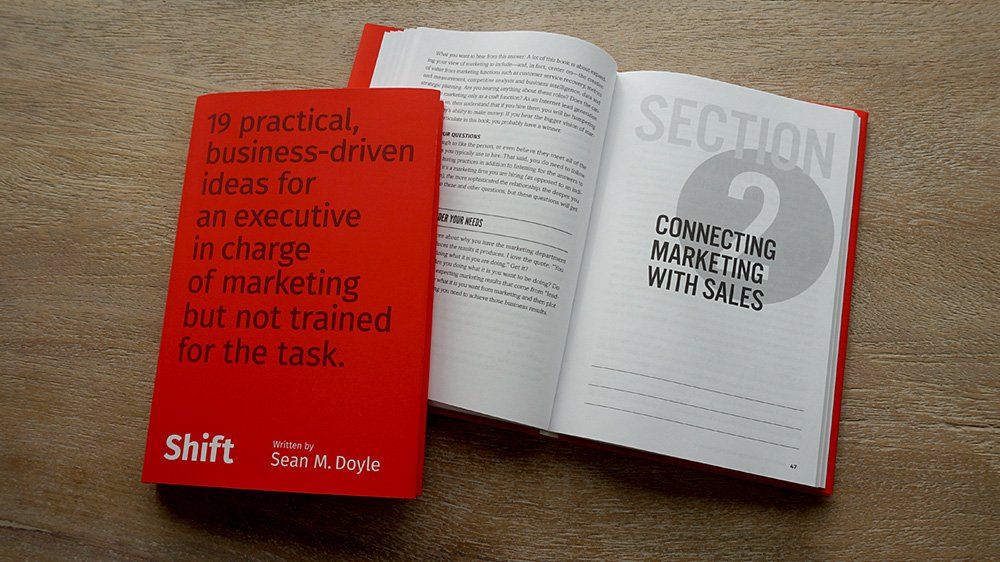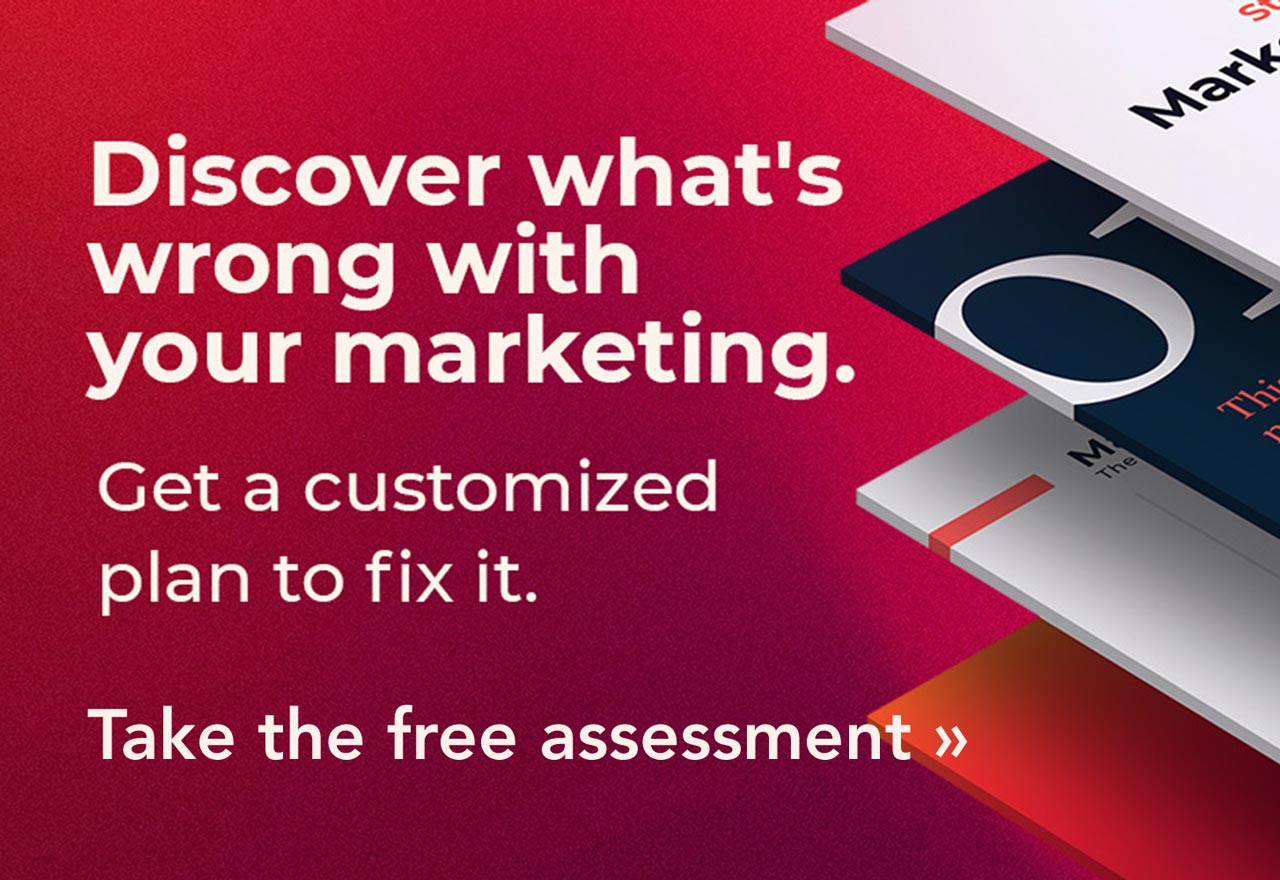How to Create Awareness When the Problem Isn’t Obvious
How do you make customers aware they have a problem your business solves, especially when they aren’t aware they have a problem?
You might offer a fantastic product or service with incredible value. If you aren’t talking about it in your marketing and website with complete clarity you leave potential customers wondering if your company can help.
In this episode, J.J. Peterson, April Sunshine Hawkins, and Brian Sooy answer a question from Kevin Groff, a business owner struggling to get his potential customers to realize they even have a problem before showing them how his business can help fix it.
Kevin Groff from A Reliant Home asks, “I’m trying to talk to potential customers who aren’t aware they have a particular problem. If you have a headache, it’s easy to sell aspirin. If I can get over this clear communication hump, I can take a business puttering along and potentially turn it into a rocket ship.”
Five ways small business owners can create awareness for non-obvious problems:
1. Focus on a specific category and approach the problem from the universal
- The obvious solution is to do a broad brand awareness campaign. That’s a shotgun approach to a very narrow target.
- Home services is a broad category with many sub-categories, such as repair, maintenance, plumbing, and installation.
- Talk about the category (not your company) and how difficult it is to find a reliable, trustworthy home maintenance company in your category.
- If one person has the problem, many people most likely have the same problem.
- To create this kind of awareness, look historically at what kind of problems you solve the most for your customers and what are the most profitable for you.
- Make it clear you have an obvious solution.
2. Draw attention to the big picture or philosophical problem
- Many homeowners take pride in caring for their homes, but there may be a time when that’s impossible.
- “Your house is too much for you to care for yourself; we can help.”
Companies that won’t invest in marketing don’t make money from marketing.
3. Identify the right audience and grow from there
- Answer this question: Who is your solution for, and what’s it for?
- Focus on the smallest possible audience that aligns with the answer to that question.
- Simplify the story you tell: Agitate the problem (with empathy), present your service as the solution, and paint a picture of what life is like when the problem gets solved.
4. Choose the appropriate channels where your audience listens
- Your website is where people will go first to see if you’re honest and read what others have said about your company.
- If you own a local business, claim your Google Business Profile. Create helpful posts that show people that your company has the expertise to solve their problems.
5. Be consistent with how and where you show up in the marketplace
- People buy from companies with which they are familiar.
- How people remember your company and their perception of it is about how, when, and where you show up in the marketplace.
Talk about the Customer’s Problem to Grow Awareness
I remember talking with the owner of a local station about the value of radio advertising. He pointed out that a medium like radio (or streaming) gives companies a cost-effective way to build familiarity and awareness so that when a customer has a problem in a specific category, that individual is familiar with the advertiser because they’ve heard their brand name associated with the problem (the category).
As a business owner, you need to identify your customer’s problems, so your messaging and marketing (the words you put in people’s mouths and the channels in which you share those words) connect their problems with your solution in their minds. The customer’s problem is the category you market.
Think about the products and services you buy. When it comes to a home services company, plumber, or electrician, many people have no idea whom to call because that category of services is not top of mind, which means that your company will not be top of mind unless it’s familiar and memorable to the prospective customer when they experience a problem in their home.
Many companies focus on their brand (“ABC services company”) and do not market the category into which their business fits. That means they won’t be top of mind when the customer experiences a problem. When you know who your ideal customer is, invest in marketing your category to them (home services) so when they think they need a home services company, they think of yours:
“When I think of (category), I think of (company name).”
Market to people before they’re aware they have a need
This episode of the Business Made Simple podcast (about pivoting your product or business) is an excellent example of using a lead generator or email nurturing campaign to market to a category (pre-grieving families) to build authority and create familiarity for a brand.
Donald Miller’s recommendation to the owner of a funeral home is excellent. Brand strategy is not an “either/or” but an “and/both” endeavor when you market to the category.
- Marketing the category (via GriefCompass.com) to the opportunity/problem/category (grief) – which is about the customer’s needs, and
- Building brand awareness (branding) which frames the story of how to manage grief, shared with empathy and authority from the business.
This type of empathy-heavy approach is relational marketing (not relationship marketing).
When you show up where the customer is hurting and needs a guide, your messaging touches the heart and speaks to the mind. When branding and marketing work together, they create a win/win for the consumer and the company.
Three marketing takeaways for small businesses
- Build familiarity by owning a point of view that gives people the language to talk about the problems they experience now or in the future.
- Build familiarity over time through a service or email nurturing campaign that educates people so they get smarter and become aware of problems they might know they have.
- Build familiarity by being the expert people know they can turn to and whose resources they share when the topic comes up in conversation.
Subscribe to get first access to more content when you follow Everybody Brands on Substack or Everybody Brands on LinkedIn.
Brian Sooy is the first Level C Certified Brand Strategist and StoryBrand Certified Guide. Brian leads the Aespire branding agency and authors books and thought leadership to help leaders find clarity, focus teams, align culture, build brands, multiply impact, and build thriving businesses.
Do you have a hard time explaining what your company does or why your brand matters to people?
If you struggle to grow your business, you’re not alone. Aespire can help you create a clear message and brand that helps you grow your business. Contact us today for a consultation with a StoryBrand Certified Marketing Guide.
Get a Free Comprehensive Marketing Assessment
Stop hoping your marketing will sort itself out.
- Complete this free assessment in 15 minutes.
- Review your custom report (and schedule a 30-minute review) to diagnose what’s happening.
- Create an action plan to get your marketing back on track.

Do you feel powerless because you’re competing against deep-pocketed competitors? Call today to design a strategy to capture demand, create new customers, and grow your business.
Aespire Branding
5061 N Abbe Rd, Suite 2
Sheffield Village, OH 44035
Phone: (440) 322-5142
Email Aespire
Aespire is a Woman-Owned Small Business Enterprise (WBE)
Many service and solution companies struggle to explain how their expertise helps customers solve problems and achieve their goals. Aespire guides leaders with brand strategy, design, and marketing so they can start, grow, and sustain thriving teams and businesses.
We're committed to helping people flourish, businesses thrive, and communities prosper.
Privacy Policy | Terms of Use | Accessibility | Privacy Settings | Site Map
As an Amazon Associate, we earn from qualifying purchases on this and other affiliate programs.
© 2024 Aespire Cleveland StoryBrand Guide | Ohio Marketing
|
Brand Strategist | Built on
Aespire Websites Made Simple








